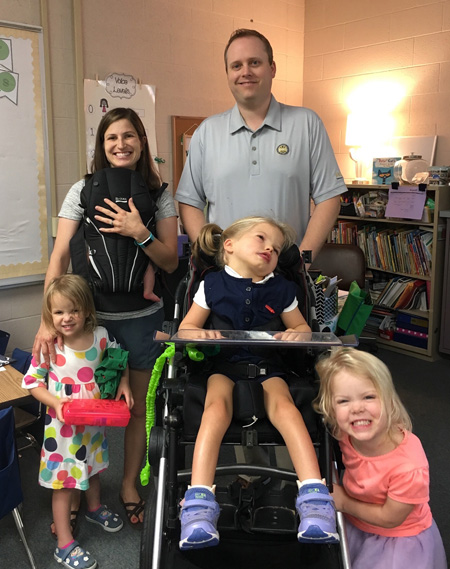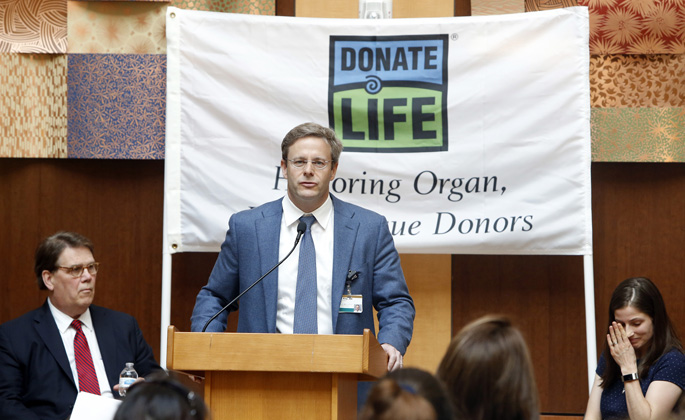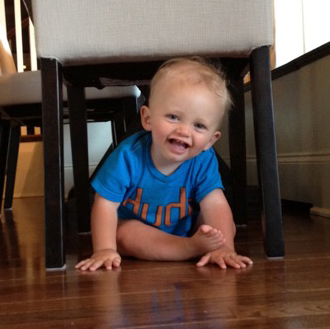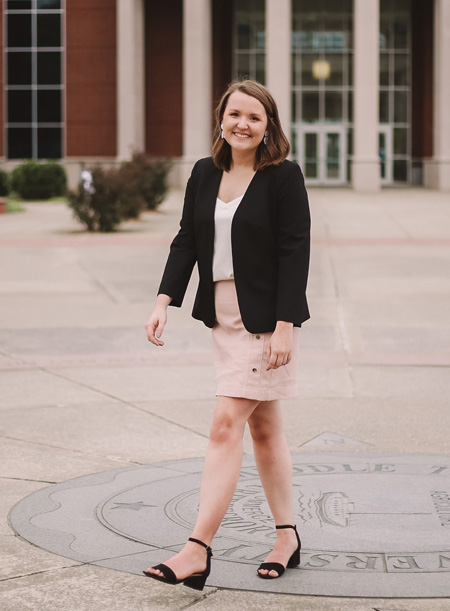by Matt Batcheldor
Heroes come in all sizes, and Mikayla Honeycutt was a small but mighty one.
Born with a congenital brain condition called Dandy-Walker Syndrome, she had too much fluid in her brain. She was delivered early at 34 weeks so doctors could put a shunt in her brain to relieve the pressure.

Then, for five and a half years, she lived a happy life in a growing family. Less than two years after her birth, she was joined by twin sisters — Hailey and Ainsley. Then, last year, the family welcomed baby Caroline.
However, Mikayla’s condition took a turn for the worse, and she died in September 2018. Her parents, Heather and Graham Honeycutt, were faced with the agonizing decision of whether to donate her organs. They said yes, and on Sept. 28, her heart, liver and kidneys saved the lives of four other people. Her esophagus was also donated for research.
The Honeycutts will be among the guest speakers at the 10th annual Donate Life Flag Raising Ceremony, part of a national effort to raise awareness about the need for organ and tissue donors. The event, scheduled for 11 a.m. to noon on Tuesday, April 16, in the sixth floor atrium of the Critical Care Tower, celebrates organ donor families, living donors and hospital staff who care for donors and transplant recipients.
The atrium will feature a traveling exhibition of photos called “The Art of the Scar,” showcasing the scars of transplant recipients and living donors as badges of honor.
The photographs were captured by the Clover Hill High School Photography Club in Chesterfield, Virginia, and the exhibit is on loan from the United Network for Organ Sharing (UNOS).
“We’re going to talk a little bit about our journey with organ donation,” Heather Honeycutt said, “what it’s meant to us and how it’s really helped us bring some sort of closure to all of this.”
She said she will share more about the life of her “little hero,” whose condition affected her cognitive and physical abilities but never her playful spirit.
“She was a child with a really sweet disposition,” she said. “She couldn’t walk, couldn’t talk but definitely had a way of letting you know if she liked something or didn’t like something.”
Mikayla had just started school at Harpeth Valley Elementary in Bellevue before her death, was making progress developmentally and loved to swim with the Nashville Dolphins, an aquatics program for children with special needs.
Heather Honeycutt doesn’t hesitate to add that though Mikayla loved her, she had a special bond with her father.
“She was just a really beautiful spirit and beautiful soul,” Graham Honeycutt said. “I was sort of the one that did a lot of the physical stuff with her — changed her diaper, gave her baths. We just spent a lot of time cuddling.”
He said that he signed up to be an organ donor when he got his first driver’s license, but “you don’t really plan for your kids to go before you.” The decision, he said, was very difficult.
“I hated every minute of it, but I just kept going back to ‘if my child needed a heart, wouldn’t it be worth just hours of discomfort for possibly giving someone a lifetime?’” he said. “Her life and her spirit lives on. Her organs live on in other people.”















